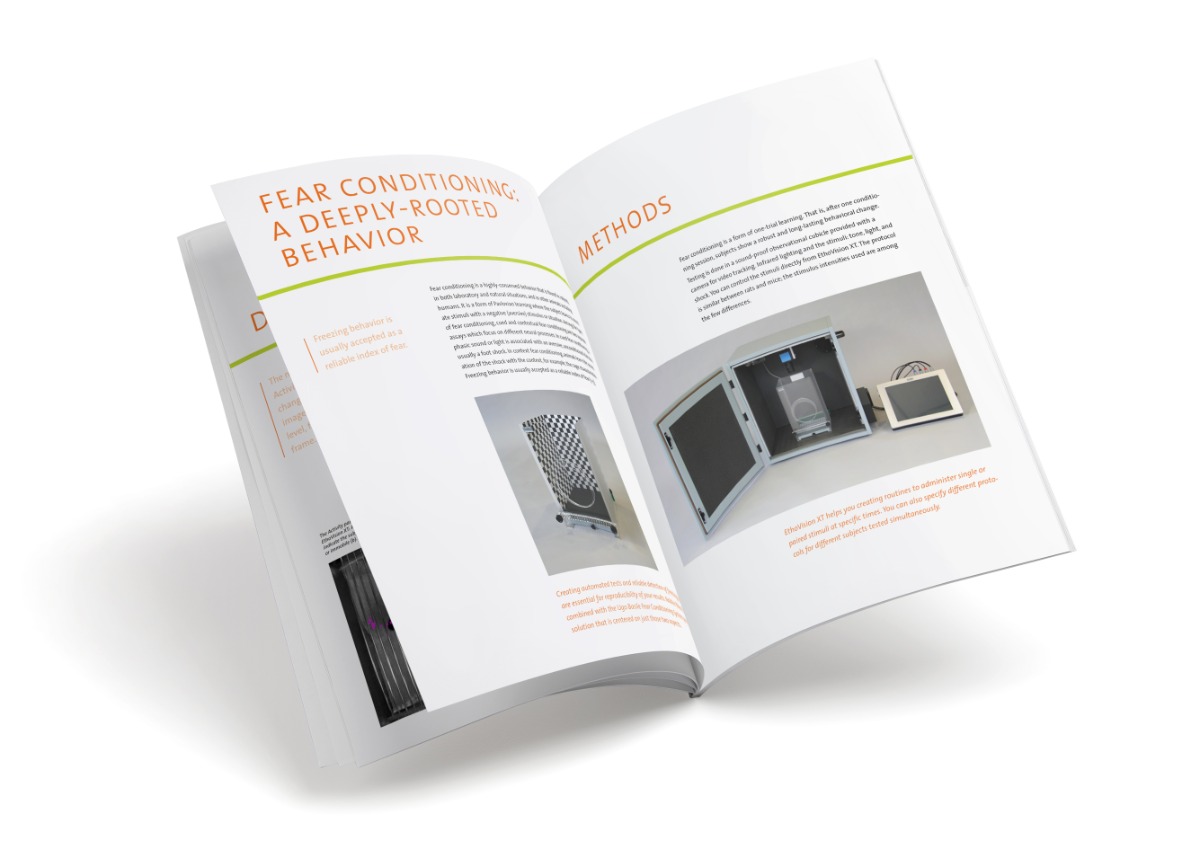Tools for
Fear conditioning
Fear conditioning and other learning tasks in rodents are typical in a wide range of studies, including neuropharmacological studies. Fear conditioning is a form of Pavlovian learning where the subject learns to associate stimuli with a negative (aversive) stimulus or situation.
A typical reaction to the expectation of an aversive stimulus or situation in rodents is a behavior described as freezing.
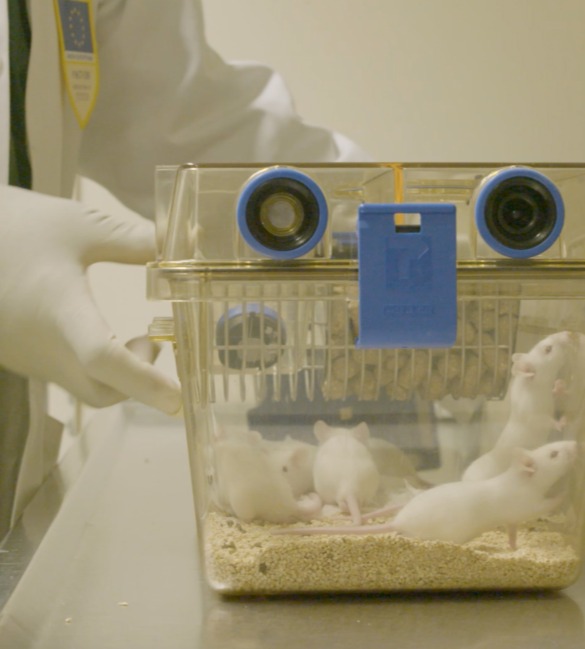
Fear conditioning cage
The Noldus/Ugo Basile Fear conditioning setup. The Fear conditioning cage is often equipped with patterned walls for contextual conditioning.

Video tracking and fear conditioning
So why should you use EthoVision XT in your fear conditioning tasks? Well, first of all, EthoVision XT is excellent at detecting freezing. Second, the integrated analysis view is the most intuitive way to see the results of the automatic detection, so you can see what your data looks like. There are many more reasons to use EthoVision XT, but don’t just take our word for it, watch the video to see what one of our customers has to say!
Automatic detection of freezing
Instead of using the mobility of the subject as an indicator, freezing is more accurately assessed by a method called activity detection in EthoVision XT. This means that the software detects changes at the pixel level from one video frame to the next. These pixel changes are recognized in the whole video frame, not just the area that is recognized as the animal's body.

"You have a really good detection of the freezing. I mean, the idea of the change in the pixels, it’s a really good one."
Prof. R. Rimondini |Alma Mater Studiorum Bologna, Italy
You’re in control
Lack of movement is not just that. For example, an animal that is displaying freezing behavior does not necessarily have to be completely still, because it still has to breathe. Where this threshold lies can be dependent on a number of variables - take body size, for example. Your subject's body size might be affected by the treatment or manipulation you have applied. That is why you are in control of that threshold.
Free white paper
Fear conditioning
Fear conditioning is a highly-conserved behavior that is found in rodents, in both laboratory and natural situations, and in other animals including humans. It is a form of Pavlovian learning where the subject learns to associate stimuli with a negative (aversive) stimulus or situation.
Interested in fear conditioning? Download the free white paper and learn more!
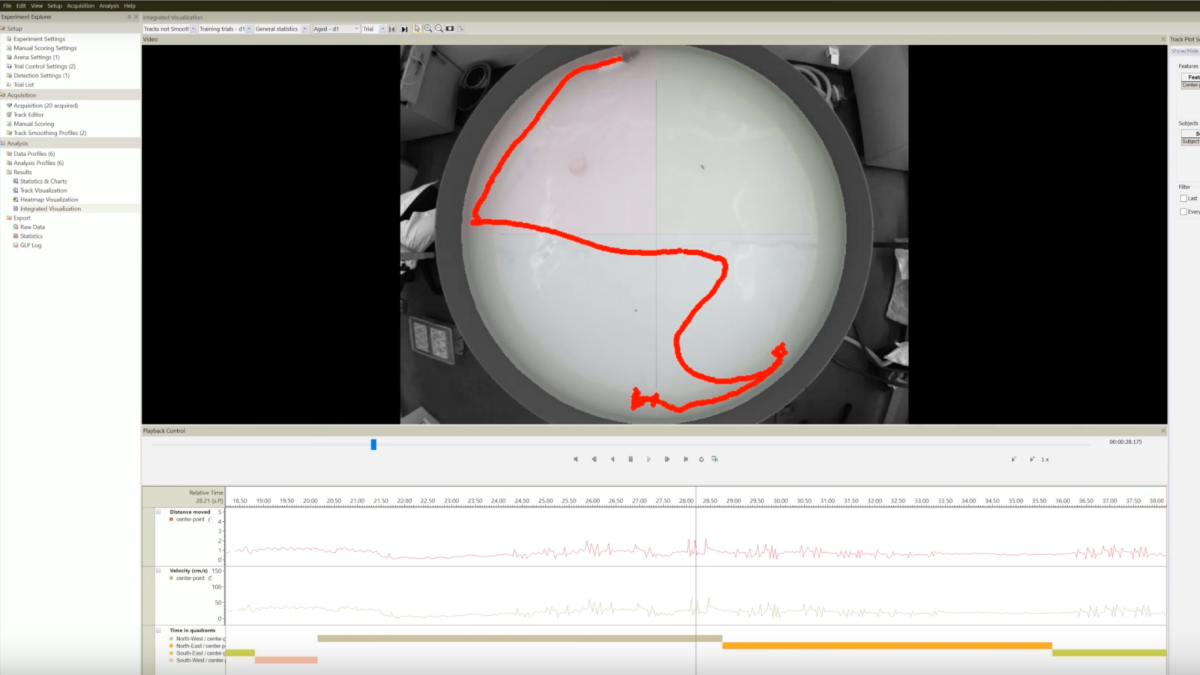
Integrated visualization
One of the ways to fine-tune this threshold is by using integrated visualization, where the tracks of your animal are superimposed on the video file, and your data is represented in dynamic graphs. A great little extra is that this part of the software also has a built-in screen recording tool, which allows you to make a video of the integrated visualization that you can use for presentations.

"I think one really big step was the integrated view. We have to trust the system, but to see the animal, to see really, oh this one is really freezing..."
Prof. R. Rimondini|Alma Mater Studiorum Bologna, Italy
Powerful data selection tools
A large part of the quality of your research depends on how you analyze your data. Data selection is crucial at the beginning of your analysis. EthoVision XT incorporates easy-to-use data selection and analysis tools so you can easily compare different treatment groups and results over time.
Suggested reading
Blog post: Freeze! A recent study on PTSD and the immune system.
These are some recent studies using EthoVision XT for the fear conditioning tasks:
- Yu, T.-S.; Tensaouti, Y.; Bagha, Z.M.; Davidson, R.; Kim, A.; Kernie, S.G. (2017). Adult newborn neurons interfere with fear discrimination in a protocol-dependent manner. Brain and Behavior, 7, e00796.
- Jones, M.E.; Lebonville, C.L.; Paniccia, J.E.; Balentine, M.E.; Reissner, K.J.; Lysle, D.T. (2017). Hippocampal interleukin-1 mediates stress-enhanced fear learning: A potential role for astrocyte-derived interleukin-1β. Brain, Behavior, and Immunity, 67, 355-363.
- Wang, Y.; Li, Y.; Zhao, R.; Wu, B.; Lanoha, B.; Tong. Z.; Peer, J.; Liu, J.; Xiong, H.; Huang, Y.; Zheng, J. (2017). Glutaminase C overexpression in the brain induces learning deficits, synaptic dysfunctions, and neuroinflammation in mice. Brain, Behavior, and Immunity, 66, 135-145.
- Shahani, N.; Huang, W.-C.; Varnum, M.; Page, D.T.; Subramaniam, S. (2017). Forebrain depletion of Rheb GTPase elicits spatial memory deficits in mice. Neurobiology of Aging, 50, 134-143.
Relevant blogs

Freeze! A recent study on PTSD and the immune system
It is pretty well-known that stress and anxiety have an effect on the immune system. This can be a real problem, especially in psychiatric disorders.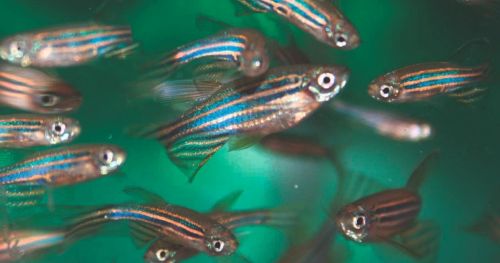
The search for robust fear inducing stimuli in zebrafish research
Zebrafish behavioral research has grown by leaps and bounds, and behavioral paradigms are being developed with the aim of better understanding mechanisms that might underlie aberrant behavioral phenotypes.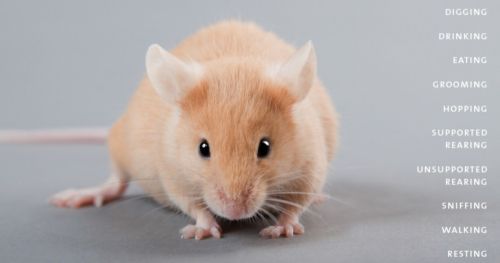
 English
English German
German French
French Italian
Italian Spanish
Spanish Chinese
Chinese
